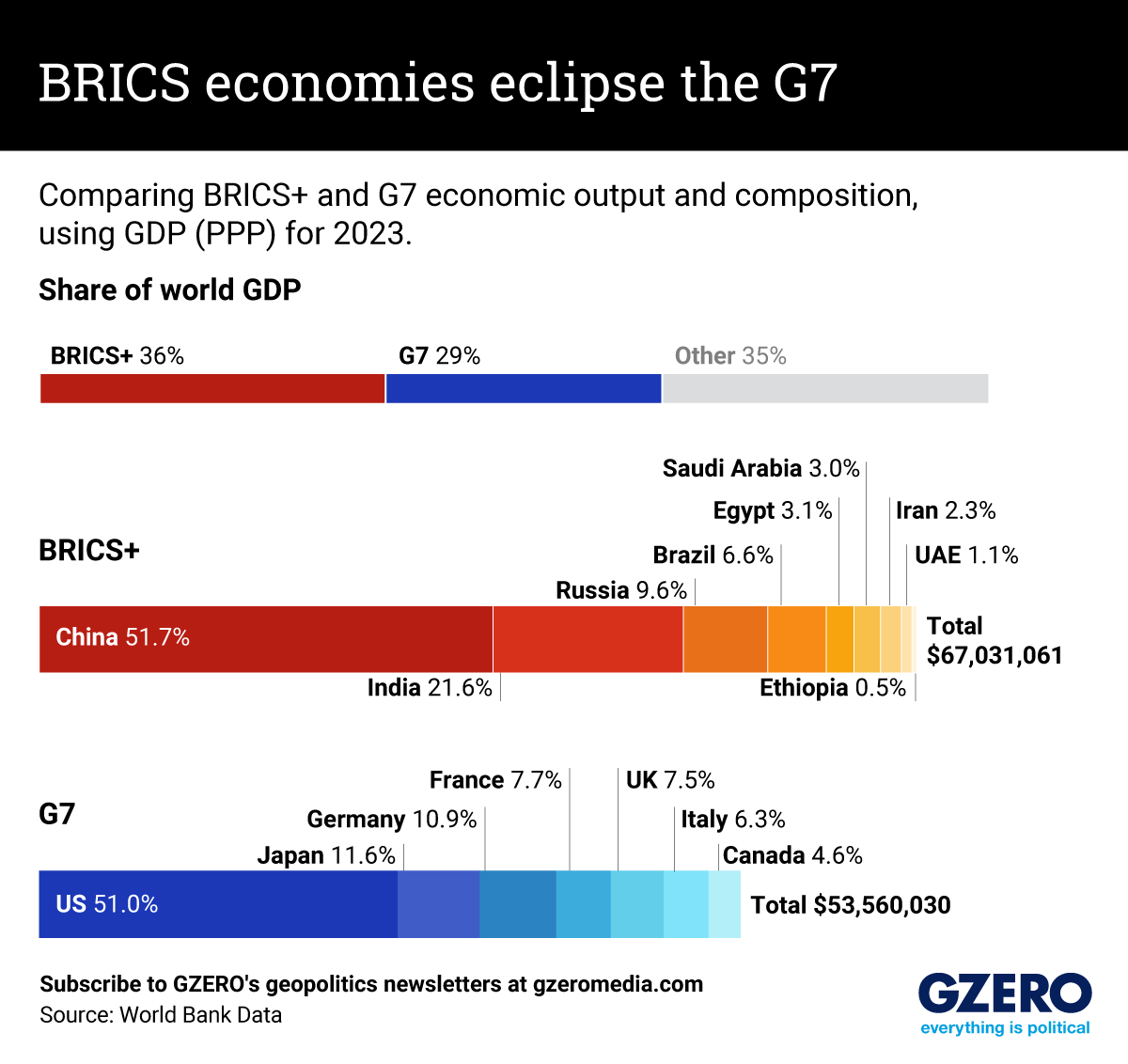In 2001, a Goldman Sachs economist coined an acronym for the four largest and most promising “emerging market” economies: Brazil, Russia, India, and China became known as the “BRIC” countries.
Five years later, reality imitated art when the countries decided to begin meeting regularly at “BRIC summits,” with the latest occurring in Kazan, Russia, this week. The subsequent inclusion of South Africa upgraded the “s” to a capital letter: the BRICS.
The group, which lacks formal treaties or binding obligations, has always been united more by what it opposes — US dominance of global financial systems — than by what it supports.
After all, it’s a hodgepodge: energy exporters (Brazil and Russia) and importers (China and India), democracies (India and Brazil) and non-democracies (China and Russia), allies (Russia ❤️China) and adversaries (India x China).
But the economic clout of the group is, on paper, formidable. With the addition of Iran, Egypt, Ethiopia, Saudi Arabia, and the United Arab Emirates this year, the BRICS+ economies account for 36% of global GDP – while the G7 group of wealthy democracies amount to just 29%. But, of course, there’s a catch: China and the US each contribute more than half of their respective group’s GDP.
Here’s a look at the economic size, and breakdown, of the BRICS+ and the G7 group it hopes one day to eclipse — not only economically but also geopolitically.
